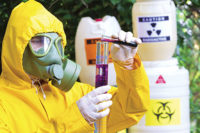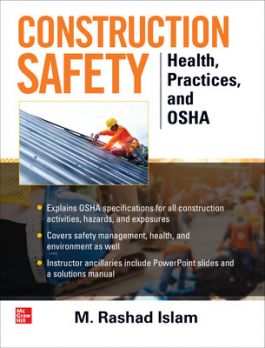Is OSHA at its nadir?
The agency has been silent for far too long

Is OSHA more irrelevant than ever?
A look at the agency’s organizational chart on the Fourth of July found many holes. Loren Sweatt, a political appointee, sits at the top as acting assistant secretary. She’s also her own deputy, listed as deputy assistant secretary. She has no chief of staff and no senior advisors. Those positions are vacant.
Many top OSHA officials, careerists, are working in an “acting” or interim basis: the agency’s career deputy assistant secretary position; the head of whistleblower protection; the director of training; and four of the ten agency regional administrators.
Perhaps by the time you read this, Scott Mugno, nominated to lead the agency in October 2017, will have been confirmed by the Senate and running the show. Perhaps not.
As of July, Mr. Mugno has been in limbo for nine months. OSHA has been without a leadership team since January 2017 — more than 18 months. When the White House last changed hands in 2008, it took less than one year for Dr. David Michaels to officially take the reins.
Ms. Sweatt spent 15 years as a policy advisor on the House Committee on Education and the Workforce. She has a degree in political science and an MBA – no practical safety and health experience.
Mr. Mugno, 61, most recently served as vice president of safety, sustainability and vehicle maintenance for FedEx Ground. He retired this past February. A New Yorker, an attorney, an Army vet, in 2000 he became managing director for corporate safety, health and fire prevention for FedEx. When nominated to head OSHA, the American Society of Safety Professionals (formerly the American Society of Safety Engineers) supported his nomination, citing that Mr. Mugno had been a member since 2004. ASSP’s president at the time said, “I know Scott would make a significant impact leading OSHA.”
Eventually we’ll find out what his impact is.
The empty bully pulpit
The biggest impact of going this long without a senior leadership team at OSHA is not a drag on standards-setting. That takes forever no matter who is in charge. Nor a retreat on enforcement (except inspection numbers are down and the incompliance rate is up). Inspections roll on, with a number of six-figure penalties, under the direction of powerful regional administrators.
No, the problem is this: OSHA’s chief is the most prominent national spokesperson for workplace safety and health. If OSHA doesn’t speak out publicly, and continuously, for worker safety and health, who does?
Since January 2017, Ms. Sweatt has given three innocuous speeches, on the Voluntary Protection Program, grain engulfment, and most recently, National Forklift Safety Day. She ended that speech saying, “Safety is not a day, but a lifetime.” A good point. But who heard it?
There is no message coming from the top of OSHA. No sense of direction, priorities, goals, policy initiatives. There’s no OSHA leader addressing the annual meetings of the National Safety Council, the American Industrial Hygiene Association, or the American Society of Safety Professionals. No one is in the bully pulpit.
Important messaging
Almost every OSHA chief has been held on a short leash inside the Department of Labor. Can’t let OSHA run amok and cause the White House problems. Most agency bosses left regretting they could not accomplish more. Still, John Pendergrass pressed to update permissible exposure limits. Jerry Scannell wanted a motor vehicle safety standard and implemented OSHA’s egregious policy. Charles Jeffress focused on ergonomics. John Henshaw used the agency’s public platform to emphasize making the business case for safety and health and ushered in a role for OSHA in emergency response following 9-11. Dr. Michaels repeatedly promoted the need for injury and illness prevention programs.
In the end, these leaders didn’t get the results they wanted. Still, they used OSHA’s national platform to raise awareness levels about significant issues such as exposure limits, ergonomics, motor vehicle safety, the business case for safety, and safety and health management systems. The media coverage they received made companies look at these areas of their safety and health programs. Many large corporations took matters into their own hands and set their own exposure limits, ergonomic programs, vehicle safety programs, management systems, and developed business value propositions for safety and health.
Lack of will
Today, many large corporations are so far beyond basic OSHA compliance that the vacuum in Washington is a minor concern. But for millions of small and mid-size businesses without full-time safety and health pros, OSHA points the way. Not now. OSHA could be raising issues such as vehicle safety, sustainability, serious injuries and fatalities, the aging workforce, obesity and health issues, workplace violence, human and organizational performance. If there is no will in Washington to emphasize these issues, there is no awareness or interest in millions of workplaces. OSHA, under Republicans or Democrats, has never displayed the lack of leadership we see right now.
The void can’t be filled soon enough.
— Dave Johnson, ISHN Editor, johnsond@bnpmedia.com
Looking for a reprint of this article?
From high-res PDFs to custom plaques, order your copy today!










.jpg?t=1721257160)